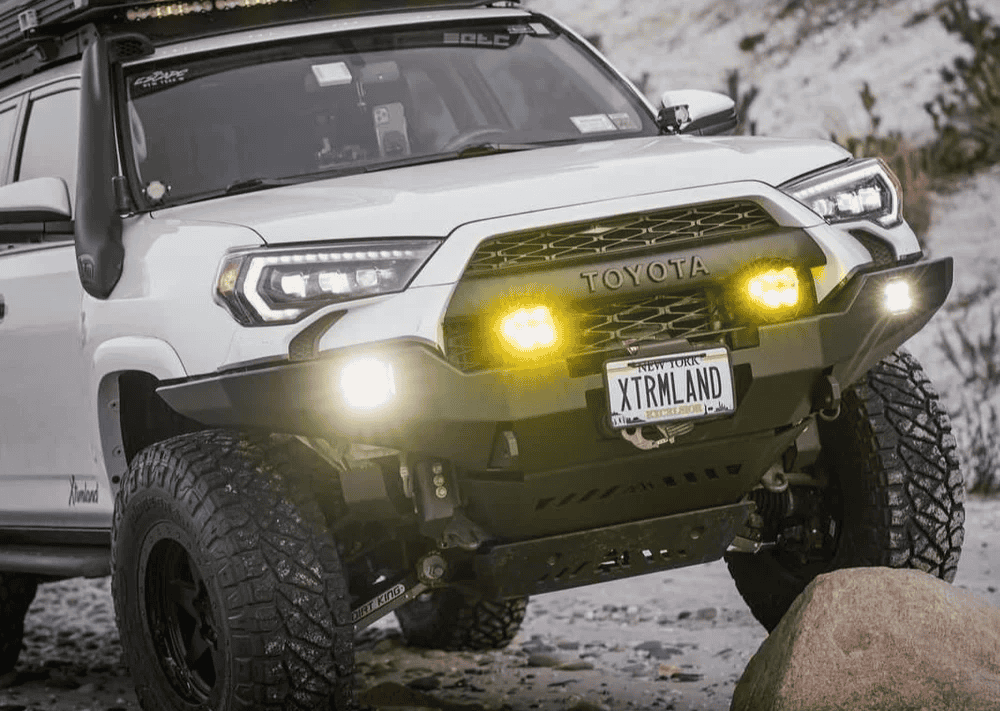Overland Vehicles

CNC precision fabrication is the practice of using computer controlled machines to cut, shape, and finish raw stock into parts that meet exact specifications. The workflow begins with a clean 3D model, moves through toolpath programming, and ends with in process and final inspection. When each step is disciplined, the result is consistent geometry, tight tolerances, and surfaces that fit and function without drama.
Modern mills and lathes maintain position through rigid structures, ball screws, and feedback systems. Three axis milling handles planar work, pockets, and profiles, while multi axis machines open up complex surfaces and undercuts. Turning adds concentric features, threads, and precise diameters. When these platforms are paired with high quality tooling and stable workholding, the machine becomes a repeatable instrument.
The cornerstone is process control. Toolpath strategies manage chip load and heat, while adaptive clearing and rest machining preserve accuracy in corners and deep cavities. Probing routines set datums and monitor tool wear. With metrology guiding each operation, the finished part mirrors the model with minimal deviation.
CNC precision fabrication of an aluminum bracket for overland van upgrades at OZK Customs
Material selection shapes the entire job. Aluminum alloys such as 6061 and 7075 balance strength and machinability and accept clear or hard anodizing for durability. Stainless grades like 304 and 316 resist corrosion and polish well, while titanium offers high strength to weight with more demanding cutting conditions. Engineering plastics like acetal and nylon create quiet mounts, spacers, and low friction components.
Tolerances define suitability. Common production goals in aluminum are plus or minus 0.001 inch on critical features, with stainless and titanium often running slightly looser unless speed yields to accuracy. Flatness and parallelism are guided by geometric dimensioning practices, which communicate intent better than simple limit dimensions. When fit matters, designers specify datums and callouts for position, runout, and perpendicularity.
Surface finish is not cosmetic alone. A lower roughness aids sealing, reduces friction, and improves fatigue life by removing stress risers. Milling marks are refined with appropriate stepovers, balanced tool deflection, and sharp cutters. Post processes such as deburring, tumbling, bead blasting, and anodizing or powder coat create consistent appearance and protect against the elements.
Fixturing stabilizes the part so the cutter can do honest work. Vises with soft jaws, vacuum chucks, or modular plates hold geometry without distortion. Locating features such as pins and hardened bushings establish repeatable datums from setup to setup. When a part needs operations on many faces, the fixture must allow rotation while preserving the reference frame.
Cutter choice steers accuracy and cycle time. Sharp carbide end mills with proper flute count evacuate chips and reduce heat. For aluminum, polished flutes and higher helix angles maintain clean edges. For stainless, slower surface speeds, high pressure coolant, and conservative engagement keep work hardening at bay. Tool length is kept short to reduce deflection and maintain feature accuracy in deep pockets or tall walls.
The digital model is the source of truth. Designers remove ambiguous geometry, add generous fillets, and set realistic tolerances. CAM software translates this intent into toolpaths that respect cutter limits and stock condition. Verification through simulation catches collisions and over travel before a single chip is cut. On the machine, operators set datums, run probing cycles, and monitor tool wear to keep the process steady.
Inspection closes the loop. Gage pins, micrometers, and height gages verify simple features, while optical systems and coordinate measuring machines check complex geometry and datums. Statistical process control reveals drift and helps decide when to adjust offsets or replace tools. Documentation keeps traceability, so each part can be connected to a setup, program, and lot.
Designing with machining in mind pays off at the spindle. Add corner radii that match common cutter sizes. Avoid very deep narrow cavities when possible, or provide access for longer tools. Standardize thread sizes and call out thread class and depth. Specify datums that match how the part will be held. When features must align across multiple operations, plan reference surfaces that survive each step.
CNC precision fabrication shines when a mount must fit a factory frame hole, when a roof rack foot needs exact curvature, or when a battery enclosure wants straight edges and predictable sealing. The same discipline that produces aerospace brackets also delivers reliable parts for trail ready vehicles and long haul vans. If you want to see how precision parts behave in the wild, browse our Overland rigs. For tailored gear, explore our Custom overland upfit options and learn more about our approach on Why choose OZK.
Precision machining at OZK supports brackets, recovery points, interior systems, and clean utility mounts that integrate with electrical, water, and storage plans. Our team blends CAD design, CNC wood routing, plasma cutting, and metal machining to create assemblies that install cleanly and hold up to real use. Bring your concept, and we will turn it into a part that fits first time and performs for the long run.
Ready to turn sketches into road worthy parts. Share your goals and constraints, and our team will engineer, machine, finish, and fit test components that stand up to trail abuse and daily mileage. Tell us what you need and get a precise quote today.
ADDRESS:
6159 E Huntsville Rd, Fayetteville, AR 72701
PHONE:
(479) 326-9200
EMAIL:
info@ozkvans.com